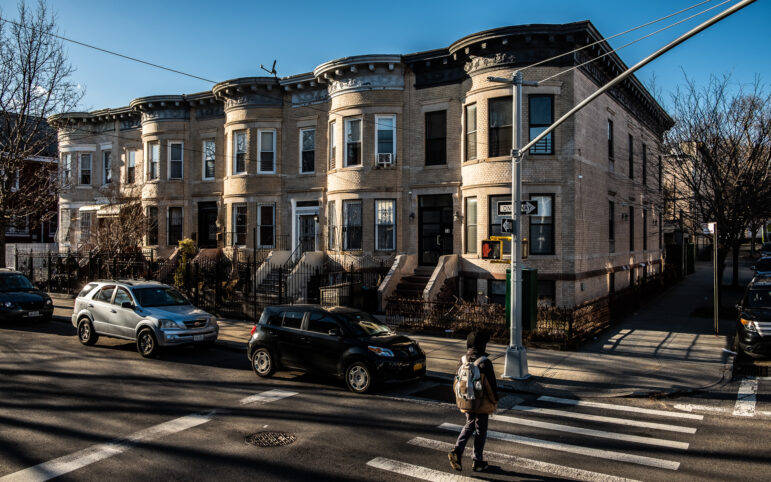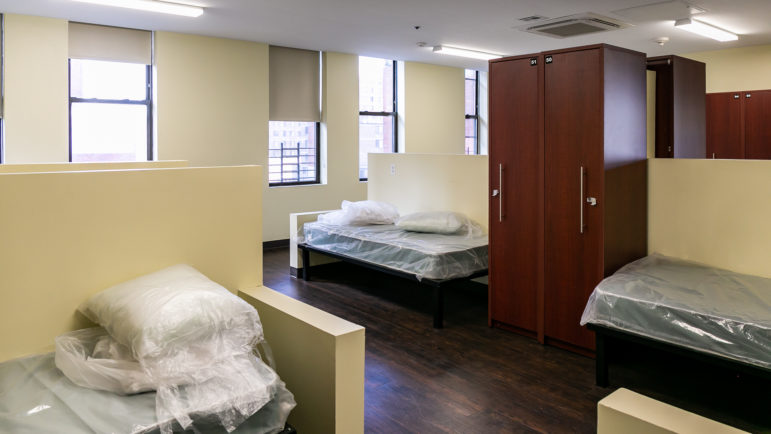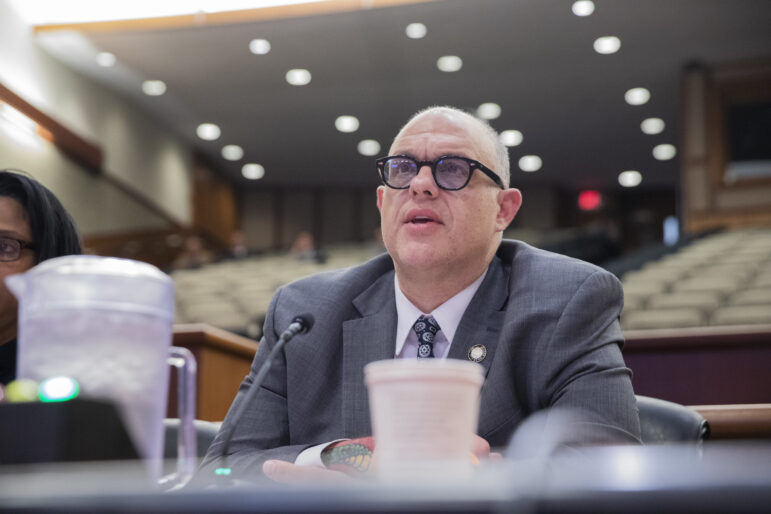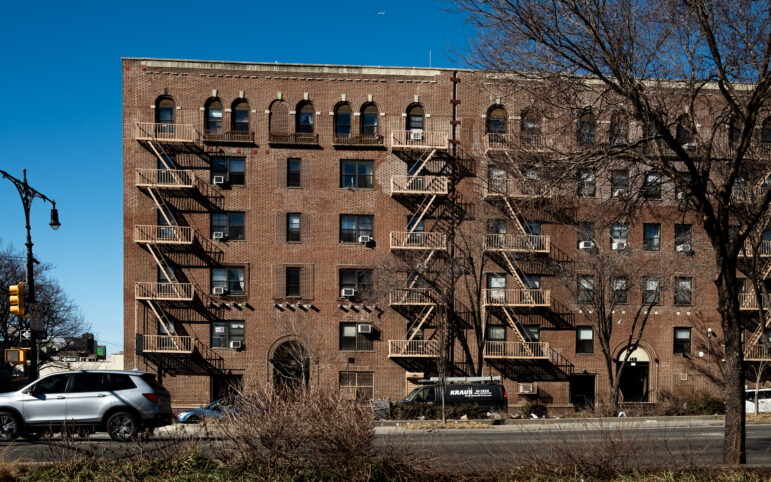Thinking about protecting your home from flooding in the new year? These resources can help you get insurance coverage.
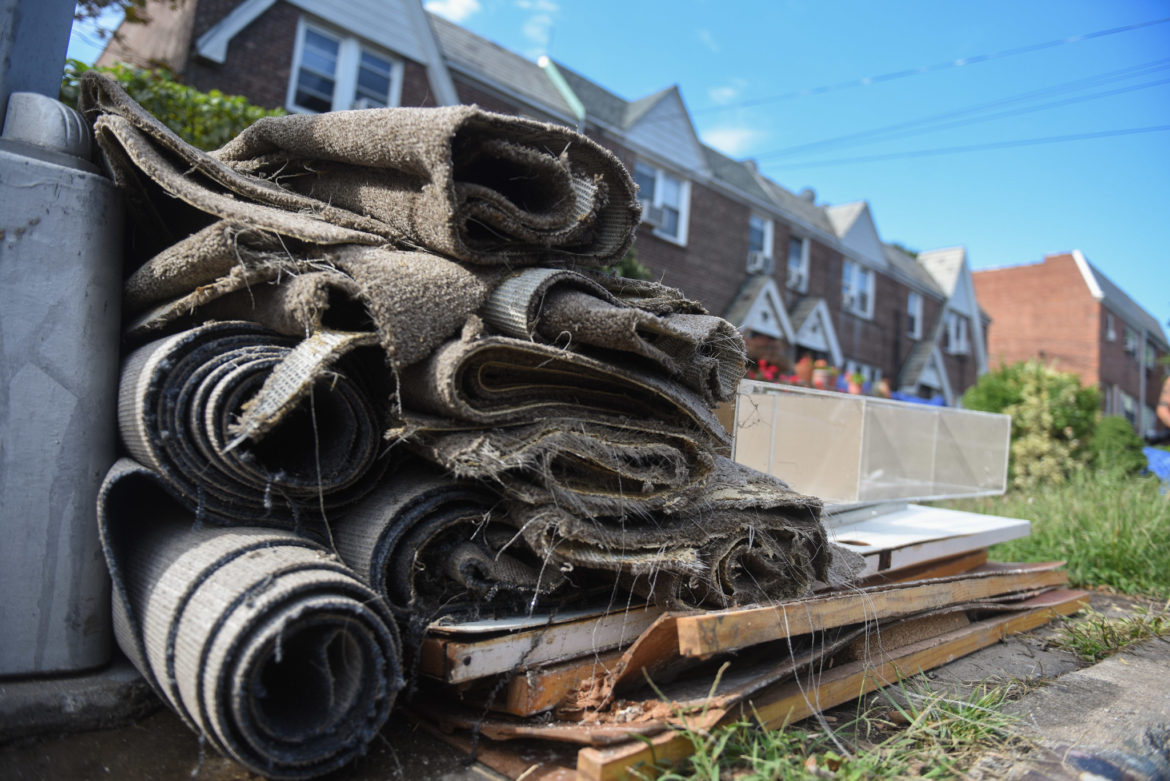
Michael Appleton/Mayoral Photography Office
Flood damage in Woodside, Queens, following Hurricane Ida in 2021.New Yorkers are no strangers to flooding. There are 1.3 million New York City residents living in or next to a floodplain, or low-lying area that gets flooded often.
That’s pretty scary when just one inch of water is needed to cause roughly $25,000 of damage to a property, according to the Federal Emergency Management Agency (FEMA).
In New York, over 20,400 insured properties across the state have experienced repeated flooding, according to an interactive dashboard by the Natural Resources Defense Council (NRDC) that uses FEMA data. It’s also the fourth state in the country with the largest number of insured properties damaged by at least two floods. And only 3 percent of residential properties in New York have flood insurance at all.
“The vast majority of people across the U.S., including in New York, do not have flood insurance and so they’re completely on their own when it comes to addressing the costs of flooding,” said Anna Weber, a senior policy analyst at NRDC who helped put together the dashboard.
Weber says there are a lot of reasons for that. For one, most homeowners’ and renters’ insurance policies don’t cover damages caused by flooding.
Few private insurance companies offer it because they don’t want to take on that massive risk. The federal government fills in that gap in the market, serving as the U.S.’ largest provider through the National Flood Insurance Program. The federal insurance policy covers a maximum of $250,000 for a building and $100,000 for its contents, according to Flood Help NY.
Another reason people don’t have flood coverage: they don’t realize it’s available to anyone who wants it, whether they live near a high flood risk area or not.
And yes, flood insurance is not just for homeowners—renters can get it too.
Renters can protect their stuff from downpour by purchasing flood insurance for just the contents of their apartment. Meanwhile, a standard flood policy for a homeowner will cover structural damage. That includes replacing a busted furnace, water heater or air conditioner and cleaning up debris.
Since homeowner policies cover costs associated with an entire building, those tend to be more expensive. But how much the coverage costs varies in large part according to the location: those who live closer to high flood risk zones will pay more.
But perhaps the main reason people don’t have flood insurance is that they can’t afford to take on the extra cost. A policy could cost a New York homeowner, on average, $1,304 a year, one insurance company says.
Homeowners are federally required to have flood insurance if they live in a high-risk flood zone and have a federally-backed mortgage, or have previously received federal disaster assistance for flood damage, according to the Mayor’s Office for Economic Opportunity. Still, there are currently no state or city-backed grant programs to help low and moderate income New Yorkers afford flood insurance.
On the federal level, FEMA has released a framework for what an affordability program would look like. But Congress is yet to pass legislation to demand FEMA create a flood insurance affordability program.
For now, those who can take on the cost can use these resources to figure out how to protect their homes from flooding in the new year and beyond.
- Use this map to find out if your property is in a flood risk zone and required to have flood insurance.
- New Yorkers can click here to get a quote for their property.
- The National Flood Insurance Program will help you get a quote on how much your policy will cost here. Or you can get a referral for an insurance agent that sells the federal policy by clicking here or calling 1-888-435-6637
- For more information on the federal flood insurance program you can call 1-800-427-4661.
- For a step-by-step guide on how to find flood insurance, use this website maintained by the mayor’s office.
- There is also a New York State website called FloodHelpNY that breaks down how flood insurance works and provides a series of resources.
- As climate change worsens, options for flood insurance have become increasingly available through the private market. But there are pros and cons to both the federal and private options, so shop around before you decide. While private companies offer much higher coverage limits than the national program, they can refuse to give you coverage if they deem your property too risky. And private companies can even decline to renew your policy if your property gets damaged.
- Some of the private insurance companies that do offer flood coverage for New York City include Neptune, Aon Edge and Loyds of London.
To reach the reporter behind this story, contact Mariana@citylimits.org. To reach the editor, contact Jeanmarie@citylimits.org
Want to republish this story? Find City Limits’ reprint policy here.


